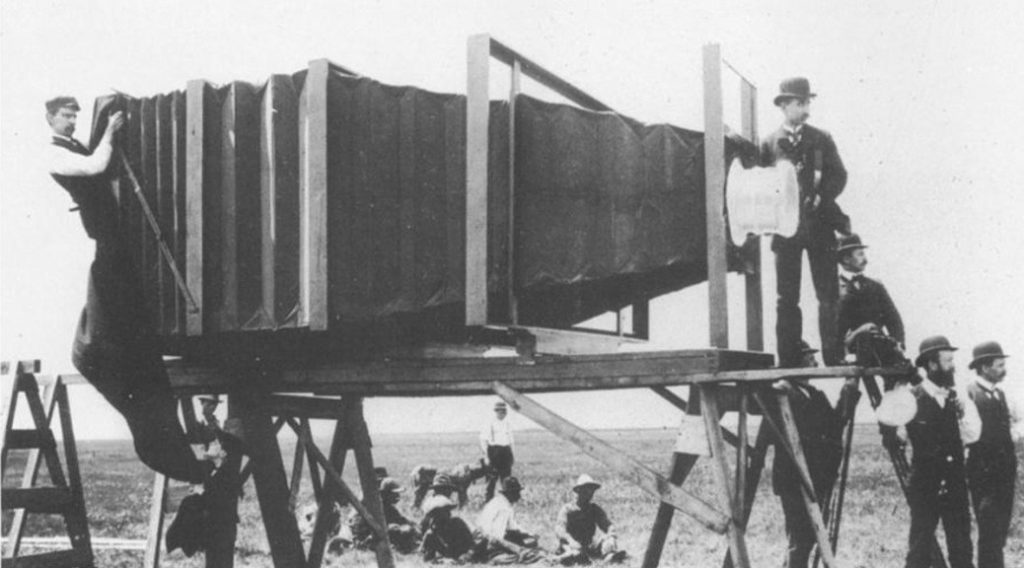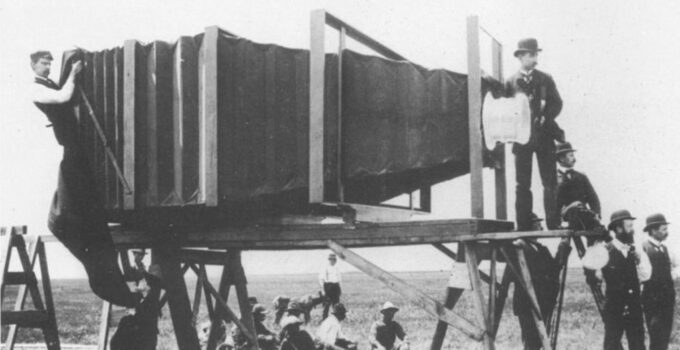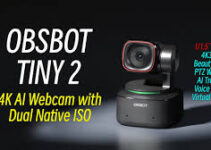**When Was the Camera Invented?**
Have you ever wondered how the camera, a device that captures memories and shapes history, first came to be?
The invention of the camera is a fascinating journey that spans centuries of innovation. It all began in the 11th century with the “camera obscura,” a simple optical device used by scholars like Alhazen to project images.
Fast forward to the 19th century, and Joseph Nicéphore Niépce revolutionized photography by capturing the first permanent photograph in 1826.
Since then, the camera has evolved from bulky wooden boxes to sleek digital devices, transforming how we see and document the world.
Here what does wix means camera?
When invented the camera?
The camera, a revolutionary device, has a rich history that spans centuries. Its origins trace back to the **11th century** with the invention of the *camera obscura*, a device used to project images onto surfaces. However, the camera obscura could not capture or preserve these images.
The journey toward modern photography began in **1826**, when Joseph Nicéphore Niépce captured the world’s first permanent photograph using a process called heliography.
His photograph, titled “View from the Window at Le Gras,” was created on a polished pewter plate coated with light-sensitive material.
In **1839**, Louis Daguerre introduced the daguerreotype, the first commercially successful photographic process, which made photography more accessible.
Over the years, innovations such as roll film, developed by George Eastman in 1888, and digital sensors in the late 20th century have transformed cameras into the advanced devices we use today.
This progression has shaped how humanity records and remembers history.
When was first camera invented?
The first camera, known as the *camera obscura*, was invented in its most basic form during the **11th century**. This device, used by scholars like Alhazen, projected an inverted image onto a surface through a small pinhole but could not record it.
However, it laid the foundation for future developments in photography.
The first true camera capable of capturing a permanent image was invented by **Joseph Nicéphore Niépce** in **1826**.
Using a process called heliography, Niépce created “View from the Window at Le Gras,” the first photograph, on a pewter plate coated with light-sensitive bitumen.
This innovation inspired further advancements, such as the **daguerreotype** introduced by Louis Daguerre in **1839**, which made photography more practical and accessible.
These early inventions marked the beginning of a journey that led to modern cameras, revolutionizing the way we capture and preserve moments in time.
Did cameras exist in the 1700s?
Cameras, in their simplest form, did exist in the 1700s, but they were not the cameras we think of today. The camera obscura had been used for centuries before the 1700s as a tool for projecting images onto surfaces.

Here, How to use your laptop camera to stream on ps5?
By the 1700s, it had become a popular device among artists for tracing and sketching scenes with more accuracy. However, the camera obscura was not capable of capturing or preserving images.
The concept of permanent image capture had not yet been developed during this time. It wasn’t until the early 19th century that Joseph Nicéphore Niépce created the first permanent photograph in 1826.
Despite this, the 1700s were a period of important advancements in optics and chemistry, laying the groundwork for the invention of photographic processes. While cameras as we know them did not exist in the 1700s, the era was a crucial stepping stone toward their development.
Did cameras exist in 1920?
Yes, cameras existed in 1920, and they had already become widely used for photography. By this time, photography had undergone significant advancements since its inception in the 19th century.
Box cameras, like the Kodak Brownie, introduced in 1900, were particularly popular in the early 20th century due to their affordability and ease of use. These cameras utilized roll film, a significant innovation by George Eastman in the late 19th century, making photography accessible to the general public.
In 1920, cameras were primarily mechanical and required manual operation. Many models, such as those from Kodak and Leica, featured advancements like adjustable focus and shutter speeds.
Photography was used for various purposes, from documenting personal moments to professional uses in journalism and science.
Although digital photography was decades away, cameras in 1920 represented a well-established and evolving technology that had already transformed how people captured and preserved memories.
Did they have cameras in 1972?
Yes, cameras were widely available and highly developed by 1972.
This was a significant era for photography, as both film and instant cameras were popular among professionals and casual users alike. **35mm SLR (Single-Lens Reflex) cameras**, such as the Nikon F and Canon F-1, were prominent, offering interchangeable lenses and advanced features for precise image control.

These cameras were widely used by photographers for their versatility and image quality.
In 1972, **instant photography** was revolutionized by Polaroid with the introduction of the Polaroid SX-70, the first camera to produce instant prints without requiring separate processing.
This innovation made photography more convenient and spontaneous.
Here, How to turn on collision camera wow?
Color film had also become mainstream, enhancing the vibrancy and realism of photographs.
While digital cameras had not yet been invented, the cameras of 1972 represented a mature stage in photographic technology, making photography accessible, creative, and widely practiced across the world.
Related faq’s
Who invented the camera in 1888
In 1888, **George Eastman**, an American entrepreneur and inventor, revolutionized photography with the invention of the **Kodak camera**.
While Eastman did not invent the camera itself, he made photography accessible to the masses by creating a camera that was simple, portable, and easy to use.
His **Kodak No. 1**, introduced in 1888, came preloaded with a roll of film capable of taking 100 photographs.
This invention eliminated the need for photographers to use bulky equipment and glass plates, which had been the norm.
Once the roll of film was used, the entire camera was sent back to Eastman’s factory for processing, where the prints were developed, and the camera was reloaded and returned to the customer.
Eastman’s contributions transformed photography from a specialized field into an everyday activity, paving the way for modern cameras. His slogan, “You press the button, we do the rest,” epitomized his vision for accessible photography.
Who took the picture of the first camera?
The first photograph ever taken was captured by **Joseph Nicéphore Niépce** in **1826 or 1827**.
Niépce, a French inventor, created the world’s first permanent photograph, titled **”View from the Window at Le Gras.”** The photograph was made using a process called heliography, where a pewter plate coated with bitumen of Judea, a light-sensitive substance, was exposed to light for approximately **8 hours**.
Niépce did not have a camera in the modern sense but used a box-like device similar to the **camera obscura** to focus the light. The image captured was of the view from Niépce’s estate in **Saint-Loup-de-Varennes**, France, showing buildings and trees.
Although the image was faint and lacked detail compared to later photographs, it marked a major milestone in the history of photography.
This photograph paved the way for further advancements, including collaborations with **Louis Daguerre**, leading to the first widely used photographic process, the **daguerreotype**, in 1839.
Camera Obscura
The **camera obscura** is an early optical device that played a foundational role in the development of photography. Its name, meaning “dark chamber” in Latin, refers to a darkened room or box with a small hole or lens on one side.
Here, How to turn off camera shutter on asus gaming laptop?
Light passes through this aperture and projects an inverted image of the outside scene onto the opposite surface.
Used as early as the 11th century by scholars like Alhazen, it helped study optics and improve perspective in art. While it could not capture images, the camera obscura was a crucial precursor to modern cameras, inspiring advancements in image recording.
When invented the camera obscura
The **camera obscura** was not invented in a single moment but rather evolved over centuries, with its principles first documented in the **5th century BCE** by Chinese philosopher **Mozi**. He described how light passing through a small hole into a dark room would create an inverted image of the outside scene.

Later, in the **11th century**, Arab scientist **Alhazen (Ibn al-Haytham)** thoroughly studied and documented the phenomenon in his work *Book of Optics*. Alhazen’s experiments with light and vision laid the groundwork for understanding the camera obscura’s mechanics.
By the **13th century**, the camera obscura was used as a tool by artists and scholars for studying perspective and tracing images. Over time, it evolved into portable devices with lenses to enhance image sharpness. While the camera obscura could not capture images, its invention was a critical step in the development of modern photography and optical science.
When was video camera invented
The first video camera, as we understand it today, was invented in the 1950s. In 1951, Charles Ginsburg and his team at Ampex, a leading electronics company, developed the first practical videotape recorder (VTR) and video camera system.
Their invention, the Ampex VRX-1000, was a breakthrough in television production, allowing video recordings to be made on magnetic tape instead of film. This opened the door for video broadcasting, enabling content to be recorded, edited, and re-broadcasted.
However, the origins of video technology go back further. In 1927, Philo Farnsworth, an American inventor, demonstrated the first fully electronic television system, which laid the foundation for video transmission and recording.
The video camera itself, as a part of this system, evolved with innovations in electronics, lens technology, and recording mediums. By the 1960s, video cameras had become more portable and accessible, paving the way for the widespread use of video in media and home entertainment.
Here, How to test my computer camera and microphone?
First camera photo
The first camera photograph was captured by **Joseph Nicéphore Niépce** in **1826 or 1827** using a process he called heliography.
The image, titled **”View from the Window at Le Gras,”** was created on a **pewter plate** coated with a light-sensitive material called bitumen of Judea.
This photograph required an exposure time of approximately **8 hours** to capture the image, which shows the view from Niépce’s estate in France, including buildings and trees.
The process Niépce used involved exposing the plate to light, which caused the bitumen to harden, while the areas shielded from light remained soft and could be washed away.
This resulted in a faint, permanent image. Though not as clear or detailed as modern photographs, this image marked the birth of photography, and Niépce’s collaboration with **Louis Daguerre** would lead to the development of more refined photographic methods, ultimately changing the way people captured and preserved images.
How did the first camera work
The first camera, known as the camera obscura, worked on a simple yet fascinating principle of optics. It was essentially a dark box or room with a small hole (aperture) on one side.
When light from the outside world entered through this small hole, it projected an inverted image of the scene outside onto the opposite surface inside the box. This phenomenon occurs because light rays travel in straight lines, and the image is flipped due to the way the rays cross at the aperture.
The camera obscura was used by artists and scientists as a tool for understanding perspective and for tracing images. However, it didn’t have the ability to capture or record the image.
The first true camera that could capture images was developed in the 19th century. Early photographic cameras used light-sensitive materials, such as glass plates or metal sheets, to preserve the images created through the lens, marking the start of photography.
What was the first camera called
The first camera that could capture images was called the **daguerreotype** camera. Developed by **Louis Daguerre** in 1839, the daguerreotype camera was the first commercially successful photographic camera, and it marked the beginning of practical photography.
Here, How to tell what model is my arlo camera?
Unlike the earlier **camera obscura**, which could only project images without capturing them, the daguerreotype camera used a glass plate coated with light-sensitive chemicals, allowing it to record images permanently.
The process was highly detailed: the plate was exposed to light in the camera for several minutes, then treated with chemicals to reveal the image.
The daguerreotype was capable of producing sharp, detailed photographs, but the process was complex and involved high levels of skill.
Although the daguerreotype camera was later replaced by more efficient photographic methods, it was the first widely used camera, revolutionizing how people captured and preserved images.
Conclusion
The invention of the camera was a gradual process that spanned centuries, with contributions from many inventors and scientists.
From the early **camera obscura** used in the 11th century to the first permanent photograph by **Joseph Nicéphore Niépce** in 1826, and the introduction of the **daguerreotype** in 1839, each step brought photography closer to what we recognize today. By 1888, **George Eastman** made photography accessible to the public with the invention of the Kodak camera.
Over time, advancements in film, digital sensors, and lenses have made cameras indispensable tools for personal, artistic, and scientific purposes, forever changing how we document the world.






